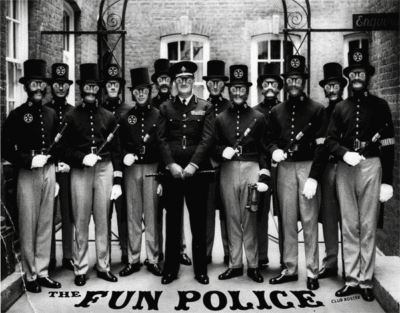Communicating uncertainty in a complex time
In a time when we are all well and truly sick of uttering the two words COVID and nineteen, we know they will still be around for a long time. On a more positive note, I’m sure we have learnt a few things that can influence the way we do things in the future in business or society by understanding the way we behave and make decisions.
The foundation of our work at Square Holes is evidence-based decision making. We are advocates for understanding behaviour, change drivers and barriers. To make decisions about our business, markets and communications, we must know what our community or consumers are thinking, doing, wanting etc etc.
I was catching up on some behavoiural economics podcasts from 2020 and Dan Ariely is one of my favourites for keeping things simple. Two words stuck with me in his podcast with BE Works Conversations[1] – Probabilistic Reasoning.
How many times did you leave home last year when masks were not mandatory (but recommended), and decided not to wear one. Or decided to wear one. Or debated in your own head for a while and then waited until you go to the shops and saw that the majority were not wearing them so you left it in the car.
How do we decide with so much uncertainty still? What influences our behaviour? If it’s not mandatory, how do we make the decision to do what is right for us and others?
- We listen to the well-respected authorities on public health and safety (the Messenger).
- We think about our own situation and evaluate the risk to us, our families, others, where we’ve been, where we are going. What could we potentially lose and what is the Incentive to ‘avoid loss’?
- We follow social N
- We go with the flow and revert to our Default of usual behaviour.
The Mindspace Framework from the London school of economics starts to become apparent but that’s something for another day.
The BE Works Conversations podcast talked about the mask wearing situation (example in Israel) and the impact of probabilistic reasoning in informing COVID-19 communications.
What is it? Technically speaking, it is problem-solving techniques based on the use of probability theory for weighing evidence and inferring conclusions[2].
The aim of a probabilistic reasoning is to combine the capacity of probability theory to handle uncertainty with the capacity of deductive logic to exploit structure of formal argument.[3]
Suffice to say, we need valid information and evidence to inform our decisions.
Communicating probability and communicating science without the uncertainty and complexity helps people make sense of a situation says Dan. There is specificity in numbers. He suggests asking people “what is the chance of getting the virus if you stand next to someone (who has it) for 15 minutes?” (Of course early in 2020, things were very uncertain.) Use of visual explanations keeps things simple. It enables the transition to understanding, rather than stating that ‘yes’ a mask works, or ‘no’ it doesn’t.
From a business and marketing perspective, data provides evidence to make better decisions. Data collection allows us to research possibilities and predict or forecast a likely outcome. Using data and analysis to understand drivers affecting consumer value (for example) can help a company deliver better value and therefore allocate funds to improving services, products and tools to make the consumer experience better. This short article on probabilistic thinking simplifies how using data to forecast is cheaper and more reliable than merely estimating.
One of the other challenges Dan mentions is arbitrary messaging or different messaging to target different demographics, causing confusion. Is using different messaging for regional v metro residents (ie masks being less necessary in regional areas), younger v older – diluting the message and causing confusion? Is a blanket, consistent message a better approach so there is no question, doubt or arbitrary thought?
We do so much research with different demographics to understand the nuances of segments, how communications should be tweaked, targeted and specific to suit an audience – yet how does tweaking the communications execution impact the main message? Quite often we look at:
- The essential message for all of population
- The hierarchy of messaging for each segment
- Images to ensure relevance and impact to the segment
- Language and tone for clarity and understanding (particularly with differences in age, education and SES levels, and cultural backgrounds)
So, my question to you is, what examples of communications can you think of where there has been uncertainty in the campaign message or broader communications, or where probabilistic reasoning has played an important part in helping to change the behaviour.
Thanks for reading.
Square Holes experience in behaviour change spans across anti-smoking campaigns, fruit fly prevention, flu immunisation, health screening, emergency department use, Elder Abuse prevention, electrical safety, road safety many others.
As part of the review process and through the qualitative and quantitative components of our research, the MINDSPACE framework allows us to understand where a campaign has potential opportunities for improvement across each of these elements, to strengthen the change drivers and influences, using the model to deeply understand people.
- Who are you most likely to listen to retain information and change behaviour?
- How are we incentivised? What could we potentially lose and how do we avoid the loss?
- How do we make certain behaviours the norm? What are the barrier to becoming a norm?
- How do we avoid the default, and make the behaviour easier to change than revert to old ways?
- What can be used to increase relevance through images of positive behaviours?
- What conscious and sub-conscious cues can positively influence future acts?
[1] https://blog.beworks.com/becurious/beworks-conversations-with-dan-ariely BEworks Conversations with Dan Ariely: How Behavioral Science can Inform COVID-19 Communication and Polices, Including the Challenges Created by Uncertainty and Risk Perception
[2] https://www.encyclopedia.com/computing/dictionaries-thesauruses-pictures-and-press-releases/probabilistic-reasoning
[3] https://en.wikipedia.org/wiki/Probabilistic_logic




